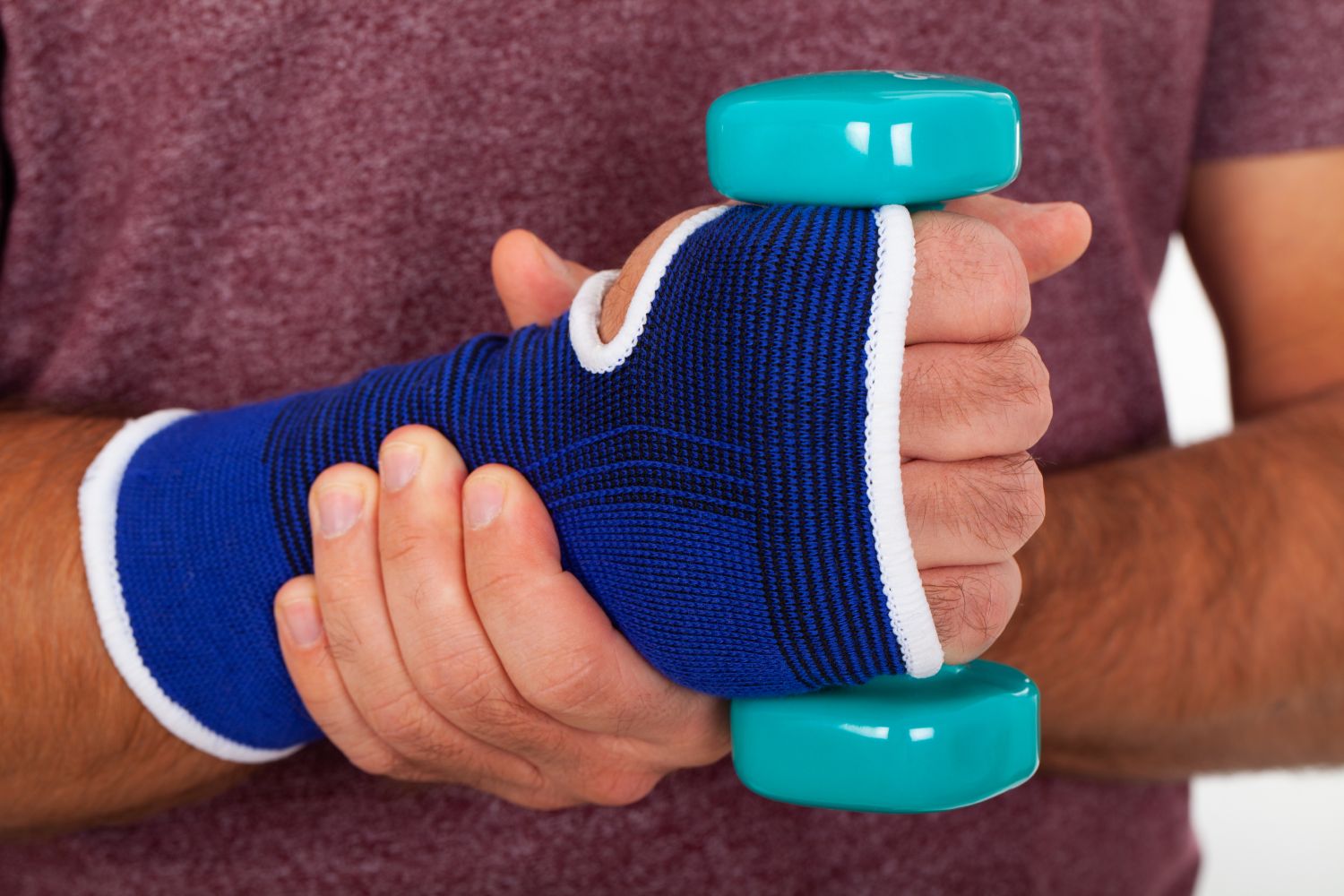A falling-on-wrist injury can strike when you least expect it, derailing your daily routine and potentially impacting your livelihood. Whether you’ve suffered a fall or are dealing with wear and tear from physical labor, understanding the nature and treatment of wrist injuries is crucial to protecting your future.
To receive prompt and professional advice, please contact Schwartzapfel Lawyersonline or call us at 516-342-2200 today. Don’t leave your future to chance. Not when your window to recover all the money and benefits you deserve may soon close forever.
Instead, call Schwartzapfel Lawyers now and allow us the honor and privilege of fighting for you!
What Are The Signs Of A Wrist Injury?
Whether it’s from falling on your wrist or getting more adventurous in your skateboarding stunts, wrist pain can signal various issues. These can range from simple sprains to complex ligament injuries.
Wrist injuries are an all too common injury, especially among those engaged in physical activities or sports. Recognizing the signs and knowing when to seek medical attention can make a world of difference.
What Are The Types Of Wrist Injuries?
Your wrist is a complex structure of bones, ligaments, and soft tissue. Injuries can range from your garden-variety wrist sprains to ligament tears and severe fractures. Here are some of the usual suspects:
- Wrist Sprains: A sprain involves damage to the ligament and is graded on a scale of I to III based on severity.
- Scaphoid Fracture: A common wrist fracture involving one of your wrist bones.
- Distal Radius Fracture: This happens at the end of your radius bone, near your wrist.
- Ulnar Injuries: These affect the ulna, one of the two (2) main bones in your forearm.
- Carpal Tunnel Syndrome: A condition caused by pressure on the median nerve.
- Ligament Tear: More severe than a sprain, this involves a torn ligament, often requiring surgical intervention.
When it comes to wrist sprains, they’re usually divided into three (3) grades:
- Grade I: Minor damage to the ligament, but mostly just pain.
- Grade II: Severe ligament damage, some joint looseness, and functional limitations.
- Grade III: Brace yourself — a completely torn ligament, severe joint looseness, and a total loss of function.
To learn more now at no charge, call Schwartzapfel Lawyers at 516-342-2200 or visit us online today!
What Are Some Diagnostic Tools For A Wrist Injury?
Sure, you’re not a healthcare professional, but knowing what to expect can ease some of the anxiety. Here are some diagnostic tests you’ll probably come across:
- X-Ray: Good for detecting fractures in wrist bones.
- MRI: More detailed than an X-ray, used for evaluating soft tissue injuries like ligament tears.
- Physical Exam: Doctors use this hands-on approach to assess the range of motion, pain level, and other symptoms you may be experiencing.
When Should You Seek Medical Help?
If your wrist is giving you severe pain, exhibiting swelling, or has a limited range of motion, it’s not the time for home treatment. It’s crucial to get yourself to a medical facility for a proper diagnosis. Overuse and ignoring the signs can lead to complications that might keep you on the bench longer than necessary.
How Are Falling-On-Wrist Injuries Typically Treated?
When you’ve fallen on an outstretched hand, the resulting wrist injury can be a real game-changer, disrupting both your work and personal life. But not to worry, here’s how medical professionals usually tackle the issue.
Remember, if you’ve been sidelined by a wrist injury and are concerned about lost wages and other impacts, don’t hesitate — call Schwartzapfel Lawyers at 516-342-2200 now for top-tier professional guidance.
Initial Measures For A Sprained Wrist
First things first, minor to moderate sprained wrists often heal on their own, given time. While you can’t exactly rush Mother Nature, there are some steps to speed things up:
- Rest: Put that wrist on the bench for at least (48) hours. No heavy lifting, no intense physical activity.
- Ice: This old standby is golden. Ice your wrist every three (3) to four (4) hours for (20) minutes. Keep this up for two (2) to three (3) days or until the pain disappears.
- Compression: Use a bandage to compress the injured wrist. This helps in immobilization and minimizes swelling.
- Elevation: Whenever possible, elevate your wrist above your heart. It’s a simple trick to reduce swelling.
For more severe cases or complications like a broken bone or torn ligament, you may need to make a pit stop at the emergency room. Here are some medical treatments often prescribed:
- NSAIDs: Nonsteroidal anti-inflammatory drugs like Advil can help manage pain and inflammation, but don’t make them your go-to without a nod from your healthcare provider.
- Splint Or Cast: A splint might be used initially to keep the wrist in a neutral position. Follow up with an orthopedic surgeon for a more comprehensive treatment plan, which could include a cast for more severe fractures.
- Physical Therapy: If your doctor recommends it, don’t skip this. Physical therapy offers specialized exercises for your type of injury that can expedite recovery time.
In extreme cases like severe sprains, scaphoid bone fractures, or severe injuries involving the triangular fibrocartilage complex, surgical intervention may be the best course of action. An orthopedic surgeon specializing in sports medicine will likely guide you through the options tailored to your condition.
If you or a loved one have experienced a wrist injury due to a fall and are wondering about financial compensation and benefits, please call Schwartzapfel Lawyers at 516-342-2200 or visit us online today. One phone call may save you miles of headache, heartache, and financial strain down the road.
How Can You Prevent a Wrist Injury?
Taking steps to prevent wrist injuries can significantly reduce your chances of spending time in the emergency room. Being proactive can make a considerable difference, especially for those involved in activities with a higher risk of falling on an outstretched hand. Let’s look at some preventative measures.
Use Wrist Guards
Wrist guards are designed to offer an additional layer of protection for your wrists. They distribute the force of an impact across a larger area, helping to minimize the risk of fractures or sprains. Wrist guards are particularly useful for those engaging in high-risk physical activities.
Engage In Physical Activity Wisely
Understand the demands of your chosen physical activity and know your limits. Don’t push yourself too hard too fast, as this can lead to overuse or more severe injuries.
Proper Technique And Equipment
Correct form and technique during physical activities can minimize strain on your wrists. Additionally, using the right equipment tailored to your skill level can further reduce risks.
Regular Physical Exams
Regular checkups with a healthcare provider can help detect any issues early on, making preventative treatment more effective. A standard physical exam may help identify weaknesses or pre-existing conditions that could lead to a wrist injury.
Condition Your Wrists
Strengthening and conditioning your wrist and arm muscles can provide added support to the wrist joint, making it more resilient to injury. Consider exercises that focus on your wrist’s range of motion under the guidance of healthcare professionals.
By being proactive and incorporating these steps into your routine, you significantly reduce the risk of wrist injuries. In any event, if you find yourself experiencing symptoms like wrist pain or swelling, consult an orthopedic surgeon or healthcare provider for an accurate diagnosis and appropriate treatment plan.
Stay Safe And Be Mindful
Being proactive about wrist safety can go a long way in helping you enjoy your chosen activities without the hindrance of injury. After all, it’s far easier to play it safe than to deal with the recovery time and potential complications of a sprained wrist or a broken bone.
Why Are Wrist Injuries More Than Just A Pain?
The wrist joint is a complex array of small bones, carpal bones, and ligaments. A wrist injury can have long-lasting effects on your range of motion and can even affect your livelihood, especially for those in physically demanding jobs.
Financial Implications
A wrist injury can have financial implications as well, including but not limited to:
- Lost wages
- Reduced contributions to annuity, pension, and other retirement benefits
Did you know you may be entitled to monetary compensation for losses like these?
For advice that is specifically tailored to your situation, call 516-342-2200 and speak with Schwartzapfel Lawyers now. And remember: time is of the essence. You must act today to save your tomorrow. You can do this by having Schwartzapfel Lawyers fight – and win – for you!
What Is The Role Of Workers’ Comp In Wrist Injuries?
When it comes to wrist injuries incurred at work or while in the performance of job-related duties, workers’ comp can be a safety net. As such, it is absolutely essential to understand the following steps in order to maximize your recovery:
- Seek qualified medical help.
- Speak with a skilled workers’ comp lawyer.
- Document the injury and any treatment(s) received.
Note: Contrary to popular belief, it may not matter whose fault it was when resolving a work-related injury in New York State. The key is that the injury must have occurred either at work or while in the performance of job-related duties.
A qualified lawyer can guide you and will work to ensure that your rights are maintained throughout the process. From helping you gather evidence to advising you on settlement versus verdict strategies, Schwartzapfel Lawyers is here to help.
Your next step? Simply dial 516-342-2200 or visit us online now. We’re not just any lawyers. At Schwartzapfel Lawyers, we are experienced, knowledgeable, and dedicated professionals with the track record to back us up.
Contact Schwartzapfel Lawyers Today
Recovering from a wrist injury isn’t just about physical recovery; it’s also about protecting your legal rights as well as your financial future. For those in the New York State area looking for reliable and thorough legal advice, Schwartzapfel Lawyers is a call away.
Don’t wait! Your future is too important to leave to chance. Protect it today by acting now and having Schwartzapfel Lawyers fight for you!
DISCLAIMER: Nothing on this page should be considered legal advice. You should seek the appropriate counsel your situation requires. For more information, call 1-516-342-2200 now!
Sources:
Schwartzapfel Lawyers, P.C. | Fighting For You
Wrist Sprains | OrthoInfo – AAOS
Effects of NSAIDs vs. Generic Pain Relievers in Hand and Wrist Injuries | Hand and Wrist Institute


















